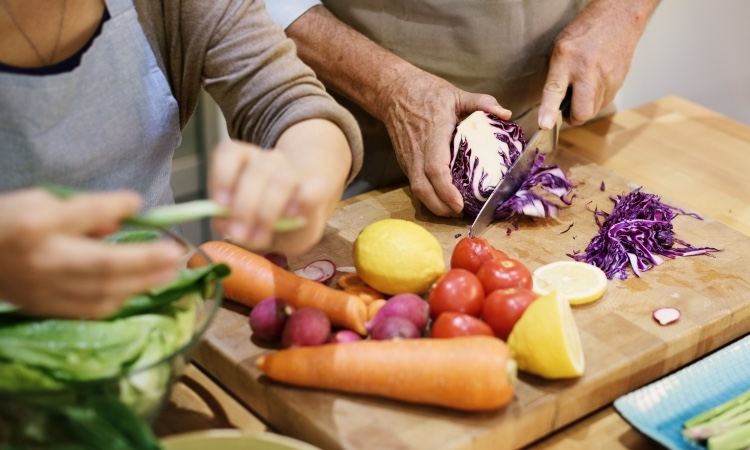
Easy Cooking Tips for Senior-Friendly Fare
By CarePatrol of Baltimore
If you’re an adult child or a primary caregiver for an older adult, or if you’re a senior yourself, it can be stressful trying to create nutritious tasty meals. Sad to say, but when “healthy cooking” comes to mind, most people think “boring” or “tasteless.” But it doesn’t need to be that way.
There are several easy fixes for brightening up your meals, and you don’t have to skimp on flavor or nutrition.
1. Try to use fresh fruits and vegetables whenever possible. The textures are usually crisper, and the colors are brighter, which make them more appetizing and usually healthier.
2. If you do need to save time, try some of these preserved options that have a longer shelf life. Canned tomatoes and frozen corn and green beans are often picked at the peak of freshness and preserved. Avoid canned green beans, though, which have a poor texture and flavor.
3. Canned beans like chickpeas can also be a healthy protein-
4. When using canned or preserved food, always check labels to make sure there’s no added sugar or salt (or very little), which are often hiding in the small print.
5. Use seasonings in place of salt. Though salt is delicious, many seniors are told to watch their sodium intake so try to get familiar with the basic seasonings to avoid boring, bland food.
Garlic, for example, is a seasoning that packs a powerful and nutritious punch, boasting manganese, selenium, Vitamin C, phosphorous, calcium, potassium, iron and copper. Fresh garlic’s sulphur-
6. Another staple seasoning to consider is dried parsley, which offers a decent serving of potassium, folate and vitamin K, and a mild flavor that goes with almost any savory food. It also makes an excellent garnish and provides pretty color contrast.
There’s also cumin and cilantro for a Latin or southwestern flair, and oregano and basil for Italian-
And don’t forget good old black pepper. Ground or pre-
When cooking with oil, use sparingly. Though coconut oil was been recently debunked as a health food, many other types of oils are beneficial for a healthy diet, such as olive, canola, flaxseed, avocado, sesame and grapeseed. Unless you’re on a doctor-
To start off, try cooking with a small amount of flavorful oils like olive for Mediterranean or Italian and sesame for Asian-
Sweeten sparingly with low-
You can always add fresh-
For diabetics, it’s best to check with a doctor or nutritionist on what sweeteners are allowed, though low-
Vanilla extract is also an excellent addition to desserts and smoothies. Coupled with a tiny bit of sweetener, vanilla extract brings a rich sweetness to healthy food.
Lastly, we recommend enjoying the meal with your loved one — instead of serving it to them. If you’re cooking for yourself, invite a friend of loved one! Many beautiful moments and interesting thoughts are shared over food in every culture. It’s the perfect opportunity to learn something new about them and enjoy each other’s company.